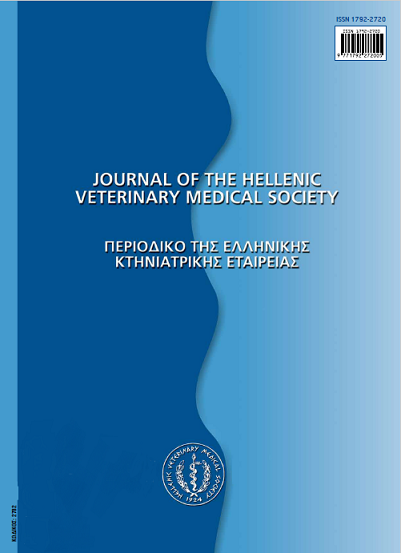Cyclic imines, as emerging marine toxins: Chemical properties, distribution, toxicological aspects and detection methods
Аннотация
Shellfish and, specifically, bivalve molluscs are a food commodity of great nterest for both commercial and public health reasons. They consume microalgae from surrounding waters, which are generally beneficial for aquaculture, but they comprise certain toxin-producing species. These species produce marine toxins which, via the filter-feeding mechanism of bivalve molluscs, accumulate in their tissues. This accumulation is more intense andmore dangerous for public health during the so-called periods of Harmful Algal Blooms (HABs) when the microalgal population grows. According to their chemical structure, marine toxins are classified into 8 groups, one of which is the cyclic imines. These lipophilic toxins were accidentally discovered during routine bioassays for the detection of other lipophilic marine toxins due to the induction of neurological symptoms and acute death in mice. They include the following subgroups: Spirolides (SPX), gymnodimines (GYM), pinnatoxins (PnTX), pteriatoxins (PtTX), prorocentrolides and spiro-prorocentrimines. The European Union (EU) is more concerned about the first three subgroups, because, in contrast with the latter three, they have already been detected in Europe or there is strong evidence supporting their presence. Spirolides are produced by the dmof\a.ge\\ate Alexandrìum ostenfeldii/peruvianum, gymnodimines by the dinoflagellate Karenia selliformis and pinnatoxins by a peridinoid dinoflagellate recently described in the new genus Vulcanodinium spp.. Although there is insufficient information regarding the geographical distribution of cyclic imines, the fact that they have been detected on multiple occasions in European waters, in combination with their aforementioned acute toxicity in mice after intraperitoneal injection, has established them, at least within the EU, as a topic of profound scientific research. In spite of their acute toxicity in mice, no incident of human intoxication has been attributed to cyclic imines. Presently, the EU has neither set any Maximum Permissible Limits for the concentration of cyclic imines in shellfish nor appointed any reference method for their detection and quantification. Currently, the methods applied are biological, biochemical and chemical. The biological method is a bioassay, which is conducted via the intraperitoneal injection of mice with an extract containing the compound under examination and it detects total toxicity. This properly is essential for the detection of unknown toxins, but the use of laboratory animals raises serious ethical concerns and animal welfare issues. The biochemical method is based on competition between cyclic imines and a fluorescently labelled compound for binding to receptors of the electric ray Torpedo marmorata. Finally, in respect of chemical methods, liquid chromatography with tandem mass spectrometry detection (LC-MS/MS) is the most significant method because it is fast, of high repeatability and specificity.
Article Details
- Как цитировать
-
CHATZIANASTASIOU, M., KATIKOU , P., ZACHARAKI , T., PAPAZACHARIOU , A., & McKEVITT, A. (2011). Cyclic imines, as emerging marine toxins: Chemical properties, distribution, toxicological aspects and detection methods. Journal of the Hellenic Veterinary Medical Society, 62(3), 240–248. https://doi.org/10.12681/jhvms.14856
- Выпуск
- Том 62 № 3 (2011)
- Раздел
- Review Articles

Это произведение доступно по лицензии Creative Commons «Attribution-NonCommercial» («Атрибуция — Некоммерческое использование») 4.0 Всемирная.
Authors who publish with this journal agree to the following terms:
· Authors retain copyright and grant the journal right of first publication with the work simultaneously licensed under a Creative Commons Attribution Non-Commercial License that allows others to share the work with an acknowledgement of the work's authorship and initial publication in this journal.
· Authors are able to enter into separate, additional contractual arrangements for the non-exclusive distribution of the journal's published version of the work (e.g. post it to an institutional repository or publish it in a book), with an acknowledgement of its initial publication in this journal.
· Authors are permitted and encouraged to post their work online (preferably in institutional repositories or on their website) prior to and during the submission process, as it can lead to productive exchanges, as well as earlier and greater citation of published work.



